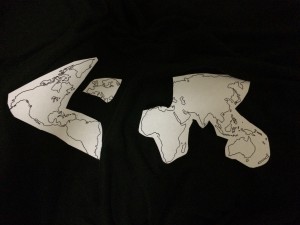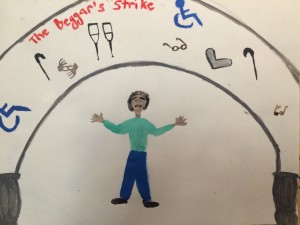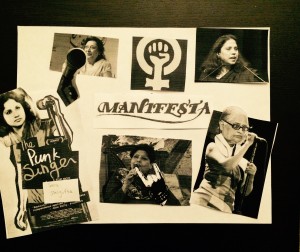Introductory essay
ø
This class was nothing like I thought it would be, for which I am really grateful! I thought it would be all about politics and the perceived identity of Islam. While this did come up in the discussion of the west, we learned so much more than that. We learned about the religion itself, in many regions and throughout many time periods, and how there is so much more to it than how it is seen today. Islam is a huge and multicultural and pluralistic which at times was confusing and a little frustrating. There was so much to cover, as every type of authority, rule, or other aspect of religion, needed to be explained for each denomination. It could be frustrating at times, when you had a question and it couldn’t always be answered, because every part of Islam would answer it differently, and it was different for each group. Overall, it was an amazing class, as it covered so many different topics, denominations, and regions.
We started this class with a discussion on clash of civilizations and clash of ignorances. There is an idea that people’s ideals and values have to clash with those around them and that you have to prove yours more correct than others, when in fact societies can connect and learn a lot from each other, if they are willing to learn from the others and don’t come in with assumed knowledge. Neither is more valuable, but learning from one another, they can together become most valuable. We also discussed how we create knowledge. A positive way to create knowledge is to learn from all kinds of people and to listen to everything. A negative way is to think you know enough, and can learn all you need to without hearing from the people you’re discussing. We also discussed religious literacy, which was really relevant and important. In learning about religions, you have to remember that religions themselves don’t say, condone, or condemn anything. The people who use them do that and use religion as their excuse or reasoning. There are a million different ways to interpret each religion, and most have political, economic, or social reasoning behind them, with or without the people practicing them knowing it. We’re not always aware of when and how these things influence how you practice you’re religion. Each person interacts with religion differently, and we need to focus on that to allow each person to have the most meaningful experience. Some people may find culture the most important part of a religion, some people might like the scripture better. If we say that there is one right way to be religious, this alienates others.
Similarly, we discussed media literacy. The media is also influenced by many factors and we have to stop and think about why a journalist may have said what they did. Media is only going to portray what they think is most interesting, or most likely to bring in viewers, so they may only choose to show controversial opinions on religion. They also tend to generalize when it comes to religion, and say things such as Islam says this, or Christianity says this, rather than recognize that it’s just people following religions saying that. This can have two effects; people accept what the media says and how it portrays things, and people begin to think in the same generalizing way.
We discussed the idea of nation states a lot too. We showed a lot of examples of destructive nation states, in that they tried to create a homogenous identity, and in doing so alienated many people in the country. Specifically in America, as seen in its past, nationalism is based on creating an “other”, to reaffirm who is included in the country. That has detrimental effects. Most recently this other has been Islam, starting from 9/11, showing its face in Obama’s elections (when people thought he was less qualified to run a country, simply because of his religion), and now with Paris attacks, ISIS, and the refugee crisis. This isn’t just dangerous to the people in the country being called the “other”, but also to democracy itself!
We discussed inclusivity in Islam. Islam itself is inclusive of other religions. Muslim is someone who practices Islam but muslim is simply someone who submits to and believes in god, no matter from what religion. There is a historical acceptance of other historical religious figures and religions. This idea is flushed out in “The Complaint and Answer”, as it describes god as disappointed in Muslims for believing they are better than non-Muslims, simply for what they believe in rather than their actions. Islam is about progress and trying to be better, so in this poem, Europeans who are trying to progress are better Muslims than Muslims themselves. This showed how Islam is about more than ritual, but about learning from others and from the past and trying to be better.
Authority is something that comes up in any subject, particularly in the many sects of Islam. It’s particularly interesting as you read about postcolonial countries, and how they deal with having and sustaining power, after some of it has been taken away, and trying to reconcile their ideals with those that have been forced upon them. These thoughts were a large part of the focus in “An Ambiguous Adventure”, “The Suns of Independence”, and many other readings. We learned about the different roles of authority in Sunni and Shiite traditions and how sometimes these roles were used in ways they weren’t intended, such as when the government was influenced in ways it’s not supposed to be by religious figures. There is also a lot of controversy over whether or not to keep the new ideas brought in through colonialism. They can be positive at times, but it’s hard to accept new concepts into tradition.
We had many conversations about feminism in Islam. I really loved these conversations, because they were really relevant to our own lives, and because of the many interesting insights my classmates had to offer. One of the main insights I got from these discussions is that we really have to listen to what people need in the fights for their own independence. If we come in with our own ideas of makes us free, we aren’t listening to the people we want to help, and they’re in the same position as when it was people who intended to put them down telling what to do. With colonialism, the west tried to enforce their ideas of equality on the colonized, and this caused pushback on feminism as well as colonialism, as they were so closely associated. Fights for freedom and civil rights should come from the oppressed, and we can help but must remember not to take over their own fight. Islam itself doesn’t oppress women, rather people may interpret the scripture to allow them to. We have to keep that in mind when listening to their voices, because we want to help them and definitely don’t want to insult their religion in the process.
I really enjoyed our discussion on sexuality and gender after reading “Madras on Rainy Days”, especially as it related to Judaism. Judaism can be understood to condemn or allow all kinds of people, similar to Islam, and it can be very frustrating from either of these religions to see someone using what you believe in to put down people for being themselves. This story also touched on arranged marriages, which is still prevalent in parts of Judaism. This is something that always frustrated me, because it is so entwined with family honor, and it’s so unfair to force all of that responsibility onto your kids into their personal lives. They shouldn’t have to marry who the parents decided, just to keep the honor, especially as this assumes heteronormativity. In this story, you see the effects of forcing a child to do your bidding when it isn’t right for them, and it was very hard to read when you know it’s happening in your own community.
Many of our topics related to Judaism and my own community. In our discussion of the west, I really understood Changez’s struggle in “The Reluctant Fundamentalist” when he felt a connection to multiple countries. He wanted to fit in and be American until 9/11, when it seemed the country didn’t want him anymore. He then longed for Pakistan, but even when he goes back you see how much America changed him. I feel this way towards Israel, as I’m sure most Jews do, in that you can be living in a country and not feel entirely wanted. I fortunately haven’t faced too much anti-Semitism, but I definitely know people who have, and when you see how Muslims are being treated in this country right now you are reminded that it could just as easily be you, and it has been your ancestors treated that way. This country could be your home, but you are always aware that there is only one place that isn’t going to turn on you, and that is your real home, and that is Israel, which is how I interpreted Changez to be feeling, when I read the book, and how probably many people feel in this country.
This class taught me so much about Islam, but also gave me new lenses to see my own religion and culture. In changing my perspective on concrete religions, this class showed a lot about the notion of religion. Religion is so entwined in the human experience, but we have to recognize it as a constantly changing construction, that is different for each person in each time. This makes studying and practicing religion so much more complex, but also more interesting and rewarding.
Below are my artistic responses to our readings and topics, as well as explanations. I hope you enjoy seeing them as much as I did making them!








